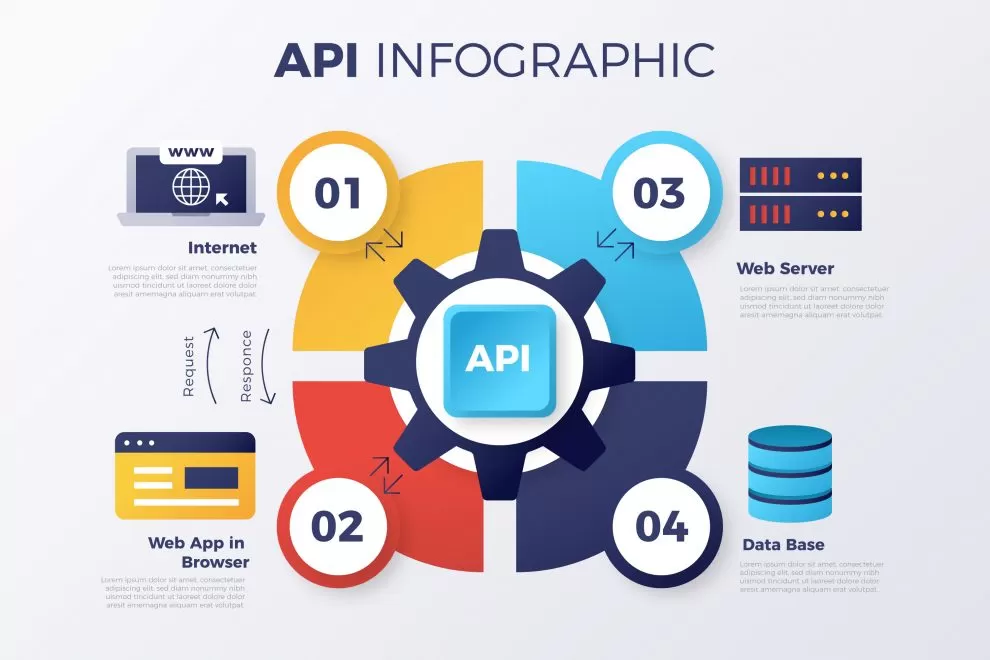In the dynamic landscape of modern software development, understanding the API lifecycle stages and best practices is essential for creating robust and efficient APIs. APIs, or Application Programming Interfaces, serve as the bridge between different software systems, allowing them to communicate and exchange data seamlessly. To harness the full potential of APIs and ensure their longevity, it’s crucial to navigate the intricacies of the API lifecycle effectively.
The API lifecycle stages and best practices encompass a structured approach that spans from initial planning and design to continuous monitoring and version control. Each stage plays a vital role in the development and maintenance of APIs, ensuring their reliability, security, and performance. By adhering to these best practices, developers can create APIs that not only meet the needs of their users but also adapt to the evolving technological landscape.
In this comprehensive exploration of the API lifecycle stages and best practices, we will delve deeper into each stage, providing insights and practical guidance to help you successfully navigate this journey. Whether you are a seasoned developer or new to the world of APIs, this guide will equip you with the knowledge and strategies needed to create and manage APIs that excel in today’s interconnected digital world.
What are API Lifecycle Stages and Best Practices?
The API lifecycle stages and best practices encompass a well-defined process that guides the creation, management, and optimization of Application Programming Interfaces (APIs). APIs serve as a crucial link between software systems, allowing them to communicate and exchange data efficiently. To harness the full potential of APIs, it’s vital to understand the stages involved and adhere to established best practices.
API Lifecycle Stages:
Planning and Design:
At the outset of your API project, careful planning and design lay the foundation for success. This stage involves defining the API’s purpose, target audience, and scope. It’s essential to determine what functionalities the API will offer and the endpoints it will provide.Development:
Developers take the plans from the previous stage and bring them to life through coding. They implement the functionality of the API, ensuring that it performs as intended. Security measures, such as authentication and authorization, are integrated into the development process.Testing:
Rigorous testing is essential to identify and rectify any bugs, security vulnerabilities, or performance issues before the API is released to users. This phase includes various testing methods, such as unit testing, integration testing, and load testing.Deployment:
Once the API successfully passes testing, it is deployed to production servers. Deployment involves configuring servers, load balancing, and setting up monitoring and logging systems to ensure stable performance.Monitoring and Maintenance:
After deployment, continuous monitoring of the API’s performance is crucial. This phase involves gathering user feedback, tracking usage metrics, and addressing issues as they arise. Regular maintenance keeps the API healthy and responsive.Versioning:
As the API evolves over time, it’s essential to manage different versions effectively. This ensures backward compatibility for existing users while allowing the introduction of new features and improvements.
API Best Practices:
In addition to the stages of the API lifecycle, there are essential best practices to follow:
Documentation:
Create comprehensive documentation that explains the API’s endpoints, data formats, and usage. Well-documented APIs are more accessible to developers and facilitate integration.Security:
Prioritize security by implementing robust authentication, authorization, and data encryption mechanisms. Protecting sensitive data is paramount.Performance Optimization:
Optimize your API for speed and efficiency. Minimize response times and reduce latency to enhance the user experience.Error Handling:
Provide clear error messages and status codes to aid developers in troubleshooting issues and resolving problems swiftly.Throttling and Rate Limiting:
Implement rate limiting and throttling mechanisms to prevent abuse and ensure fair usage of your API.Version Control:
Manage API versions effectively to maintain backward compatibility and facilitate a smooth transition for existing users when updates occur.
These API lifecycle stages and best practices are essential for anyone involved in API development. By following these guidelines, developers can create and maintain APIs that meet user needs, are secure, efficient, and adaptable to the ever-evolving technology landscape.
Also Read: How to Create REST API Using Laravel
Practical Implementation of API Lifecycle Stages and Best Practices
Let’s delve into a real-world scenario to illustrate how the API lifecycle stages and best practices can be practically implemented. Imagine you’re working on developing an API for a weather forecasting service. Here’s how you would apply each stage of the API lifecycle and adhere to the best practices:
Planning and Design:
In the planning and design stage, you define the purpose of your weather API, which is to provide up-to-date weather information to applications and websites. You determine the essential functionalities your API should offer, such as retrieving current weather data, forecasts, and historical weather data. Additionally, you decide on the endpoints, which could include endpoints for different locations, weather conditions, and timeframes.Development:
With your plan in place, developers begin coding the API. They create the endpoints for accessing weather data and implement security measures. For example, they might require API keys for access to prevent unauthorized usage and implement HTTPS to encrypt data transmissions, safeguarding user privacy.Testing:
Rigorous testing is crucial to ensure the API functions correctly. Developers run unit tests to verify that each endpoint provides accurate data, and integration tests are conducted to confirm that the API works seamlessly with various applications and platforms. Load testing is performed to assess how the API handles a high volume of requests, simulating traffic during extreme weather events.Deployment:
Once testing is successful, the API is deployed to production servers. In this stage, you configure the servers to handle weather data requests efficiently. Load balancing and auto-scaling mechanisms are set up to ensure the API remains responsive during peak usage periods, such as when a hurricane is approaching or a snowstorm is in progress.Monitoring and Maintenance:
After deployment, continuous monitoring is essential. You set up monitoring tools to track server metrics, such as response times and error rates. User feedback is collected through customer support channels and feedback forms on your website. Maintenance involves addressing issues promptly and making regular updates to improve the API’s performance and data accuracy.Versioning:
As new weather forecasting techniques and data sources become available, you need to ensure that your API evolves accordingly. Effective version control is essential to maintain backward compatibility with existing applications. For instance, when you introduce a new weather data source or improve forecasting algorithms, you release a new version of the API. Developers can then choose to transition to the latest version while older applications can continue to function without disruption.
In addition to the API lifecycle stages, you adhere to best practices:
Documentation:
You create detailed documentation for your weather API, including descriptions of endpoints, data formats, and example requests and responses. This documentation aids developers in integrating your API into their weather-related applications.Security:
To protect sensitive weather data, you implement robust security measures. Users are required to obtain API keys for access, and all data transfers are encrypted using HTTPS.Performance Optimization:
You optimize your API to deliver weather data quickly and efficiently, ensuring that applications receive up-to-date information without delays.Error Handling:
Clear error messages and status codes are provided to assist developers in troubleshooting issues when a request fails due to various factors, such as an invalid location or an overloaded server.Throttling and Rate Limiting:
To prevent misuse or abuse of your API, you implement rate limiting. Each API key is subject to a specified number of requests per minute, preventing overuse and ensuring fair access.Version Control:
You manage different versions of your weather API effectively, allowing for the introduction of new features and data sources while maintaining compatibility with existing applications.
By practically implementing the API lifecycle stages and adhering to these best practices, you ensure that your weather forecasting API delivers accurate and timely information to a wide range of applications, ultimately enhancing the user experience and reliability of your service.
Also Read: Top 10 API Development Companies In the US- 2023
API Versioning: Managing Change Effectively
API versioning is a critical aspect of API development that deserves special attention. As software and systems evolve, it’s inevitable that changes will be necessary. Effective API versioning strategies ensure a smooth transition for users while allowing for innovation and improvement.
Types of API Versioning:
URI Versioning:
In this approach, the version is included in the URI, such as “api/v1/resource.” It’s a clear and straightforward method that allows clients to explicitly request a particular version.Header Versioning:
Version information is included in the request header. This method keeps the URI clean and is more flexible for clients to specify the desired version.Media Type Versioning:
Here, version information is embedded in the media type, such as “application/vnd.company.resource.v1+json.” This method is often used for content negotiation.
Best Practices for API Versioning:
Semantic Versioning:
Follow a semantic versioning scheme, where versions are expressed as Major.Minor.Patch, ensuring compatibility and clarity for users.Backward Compatibility:
Strive to maintain backward compatibility to avoid disrupting existing clients. Only introduce breaking changes in new versions.Version Retirement:
When deprecating older versions, communicate clearly with users and provide ample time for them to migrate to the latest version.API Documentation:
Update your documentation to reflect the changes in each version, helping developers understand what’s new and what has changed.Deprecation Warnings:
When users make requests to deprecated versions, issue warnings to encourage them to update to the latest version.
API versioning is an indispensable part of API lifecycle management. Properly managing changes, communicating effectively with users, and providing them with the tools they need to transition to newer versions are key to maintaining a successful and evolving API ecosystem.
API Best Practices in Action
In the realm of API development, adhering to best practices is paramount for creating robust and effective APIs that meet the needs of users and seamlessly integrate with their applications.
Documentation:
Comprehensive and user-friendly documentation is a cornerstone of effective API development. It serves as a roadmap for developers, explaining endpoints, data formats, and usage. Well-documented APIs simplify integration and troubleshooting.Security:
Prioritizing security is non-negotiable. Robust authentication, authorization, and encryption mechanisms protect sensitive data from unauthorized access and maintain user trust.Performance Optimization:
Optimizing an API for speed and efficiency is a user-centric approach. Fast response times and low latency enhance the user experience, making your API more appealing.Error Handling:
Clear and well-defined error messages and status codes help developers diagnose issues swiftly and provide solutions to problems that may arise.Throttling and Rate Limiting:
Implementing rate limiting and throttling mechanisms ensures fair and responsible API usage, preventing abuse and overuse.Version Control:
Effectively managing API versions facilitates ongoing development. It ensures backward compatibility, allowing existing users to transition smoothly while embracing new features and improvements.
In practice, these best practices translate into an API that offers users a seamless experience with comprehensive documentation, robust security measures, high performance, efficient error handling, and fair usage policies. This approach helps your API stand out in the competitive world of application integration.
Also Read: Top 20 Laravel Development Companies in the US – 2023
Conclusion
In conclusion, understanding and implementing the API lifecycle stages and best practices are essential for anyone engaged in API development. By following this structured approach, you can create APIs that are not only functional but also secure, efficient, and adaptable to the evolving technological landscape.
The careful planning and design phase set the foundation, while rigorous testing and monitoring ensure the API’s reliability and performance. Effective version control allows for growth and innovation while maintaining compatibility with existing users.
Simultaneously, adhering to API best practices, including comprehensive documentation, robust security, performance optimization, clear error handling, and responsible usage policies, elevates your API’s quality and usability.
By combining these strategies and practices, you can create APIs that excel in today’s interconnected digital world, offering developers and end-users a seamless and productive experience. As the digital landscape continues to evolve, embracing these principles will help you stay at the forefront of API development and integration.















